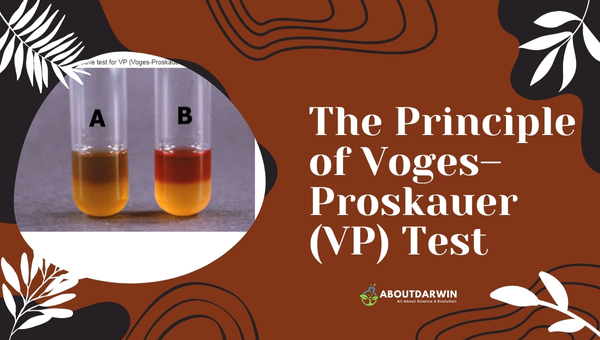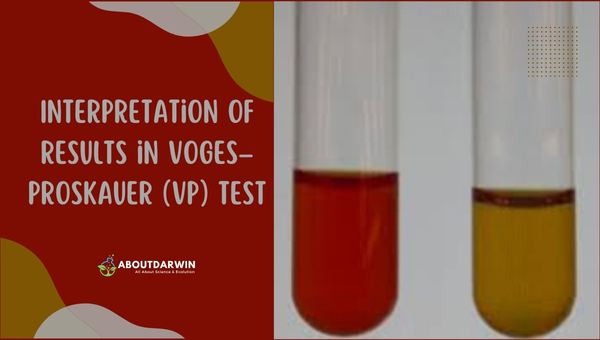Physical Address
304 North Cardinal St.
Dorchester Center, MA 02124
Welcome aboard, science enthusiasts! If you’re as compelled by the extraordinary world of microbiology as I am, you’ll love dipping your toes into the intriguing waters of the Voges Proskauer (VP) Test. An aspect of laboratory science that is as fascinating as it is crucial, it holds keys to many biochemical mysteries.
The Voges-Proskauer test is a chemical procedure used in microbiology to distinguish between bacterial species using the production of acetoin or butanediol. It operates on a deep biological level by identifying certain types of bacteria through their metabolic byproducts.
Contents
Understanding what lies at the heart of any scientific procedure is key to comprehending its broader applications and implications. Naturally, the Voges–Proskauer test is no exception.

A mainstay in microbiological testing for over a century, this test continues to be widely used to detect certain chemicals or reactions in biological samples.
The crux of a Voges-Proskauer (VP) Test resides in what it measures. It’s designed to detect acetylmethylcarbinol (AMC), which is produced by bacteria as part of their fermentation process.
Here’s how it happens:
This process unfolds over a series of biochemical reactions known as “mixed-acid fermentation.” To get technical for just a moment – this involves breaking down glucose into several components: ethanol, formic acid, lactic acid, succinic acid – and yes, you guessed it, AMC!
Also Read: Distinguishing S. pneumoniae and Viridans Streptococci
In the Voges–Proskauer (VP) Test, it’s important to understand the role of each reagent we use. These chemicals aren’t chosen at random. Every component helps us conduct this important test and read its results accurately.
Let’s go through each reagent involved in the Voges-Proskauer test, shedding light on their purpose and the key part they play:
Now that we’ve understood what each component does independent of others let’s picture how they all work together:
Understanding each reagent involved in the Voges-Proskauer test underpins performing it correctly. Without these key components and their roles clear in mind, conducting a successful VP Test would be akin to cooking without knowing your ingredients!
Also Read: Unlock DNA Discoveries: Free DNA Upload Websites Guide
Conducting the VP Test may appear complex, but with clear instructions and a careful hand, it becomes a manageable task. I’m here to break down that exact process for you.
Here’s a simple guide to help you understand how the Voges-Proskauer test is executed. Please note that this test requires a professional setting and cannot be typically performed at home.
While performing these steps, individuals must follow safety precautions due to potential hazards associated with handling chemical substances like alpha-naphthol and potassium hydroxide:
Understanding these steps provides not only an appreciation for laboratory techniques but also highlights how complex processes can be interpreted efficiently through procedural applications like the Voges-Proskauer Test.
Also Read: Unlock Your Roots: Explore Free Genealogy Websites Today
When it comes to the Voges–Proskauer (VP) Test, interpretation of results is a crucial element. It’s not enough to simply conduct the test; comprehending what the outcomes signify is equally important.

Now, you may ask, how does one make sense of these outcomes? Well, it’s simple once you know what to look for.
Positive result: A positive VP test is indicated by the development of a red color in the upper layer after the addition of reagents. This happens when acetylmethylcarbinol has been oxidized to diacetyl (a compound with a red-brown color) in an alkaline solution.
From a medical perspective, this positive result denotes that the organism under scrutiny can ferment glucose into 2,3-butanediol. Microbes like Enterobacter aerogenes and Klebsiella pneumonia often show positive results.
Negative result: A negative outcome is denoted by no color change or a copper-like color when reagents are added. This indicates that acetylmethylcarbinol was not present or was not oxidized – hence, no diacetyl was formed.
Medically speaking, this signifies that the organism lacks a 2,3-butanediol pathway and fails to ferment glucose into it. In many cases, organisms like Escherichia coli provide negative results under the VP test.
The understanding of VP tests becomes more pertinent when exploring their utility in clinical bacteriology- where these tests are employed for differentiation within the Enterobacteriaceae family – which includes microbes causing urinary tract infections or septicemia, among other ailments.
Remembering these interpretations and their medical implications isn’t just beneficial for those conducting these tests professionally but also for anyone passionate about understanding complex biochemical reactions happening all around us every day!
Also Read: Sanborn Fire Insurance Maps: A Comprehensive Guide
The VP test is typically used in clinical settings to differentiate between Enterobacteriaceae and other gram-negative rods by detecting the production of acetoin – a fermentation product.
No, this test requires specific reagents, technical knowledge, and sterile laboratory conditions which aren’t generally available at home.
Potential errors during testing can include incorrect preparation or application of reagents, contamination of samples, or misinterpretation of results due to lack of expertise.
The VP Test offers high accuracy when performed under appropriate laboratory conditions by trained personnel; however, it’s always complemented with other tests for confirmatory diagnosis.
As with any laboratory test involving chemicals and biological samples, appropriate safety measures should be followed to prevent exposure risk.
Also Read: Uncovering the Mystery: Who Really Owns Ancestry.com?
As we reviewed in our exploration of the Voges–Proskauer (VP) Test today, this examination holds immense significance in our medical world. What was designed as an effective and reliable method of identifying the production of acetoin in bacterial cultures has undeniably proved invaluable over time.
Consequently, the VP test brought a new dimension to the differentiation and identification of gram-negative bacilli, particularly among those belonging to enteric bacteria.
Knowing how to conduct-or even understand- a Voges–Proskauer (VP) Test can feel overwhelming, but I hope that understanding its principles, reagents involved, step-by-step procedure, and interpretation behind it may bring some clarity and appreciation for its vital role in microbiology laboratories around the world.